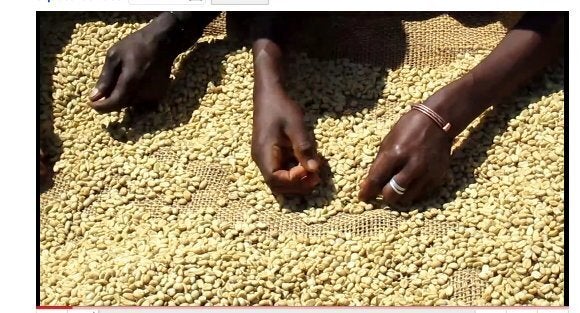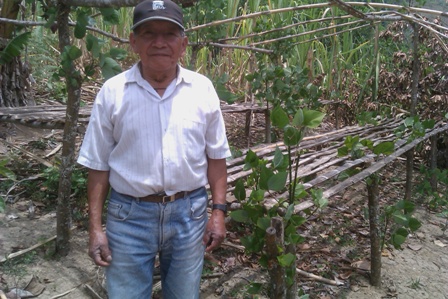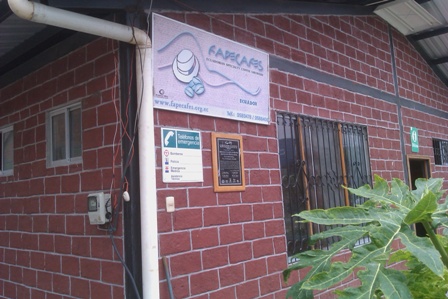
Coffee, like a lot of commodities, is getting expensive. Political instability, such as we are seeing today in Egypt and Tunisia, as well as climate change around the world, are conspiring to push prices up for everything from corn to coffee. Since June the cost of raw green Arabica coffee has jumped a staggering 80%. Everyone, including the specialty coffee company I work for, Equator Coffees, is raising prices out of sheer necessity. There is no way around it unless you happen to have a warehouse full of old coffee from two years ago (which no serious roaster would consider selling).  Unfortunately, the positive impact of high prices for farmers is offset by low production in a lot of countries. In most cases higher margins simply do not erase poverty for farmers who have chronically low yields. Take Ecuador as an example. It has terrific micro climates for coffee, and could easily be a top-notch producer, but its coffee industry has been depressed for years. It never recovered from the price crisis that crippled the coffee industry 10 years ago because of rampant political instability. At that time the price of coffee dropped to a devastating $.40 per pound and producers around the world abandoned their farms or uprooted their coffee and replaced it with more profitable crops. Add to this the impact of unpredictable weather patterns caused by climate change over the last few years, and production levels in Ecuador continue to be down by about 50% from a high reached in the late 1980s.
Unfortunately, the positive impact of high prices for farmers is offset by low production in a lot of countries. In most cases higher margins simply do not erase poverty for farmers who have chronically low yields. Take Ecuador as an example. It has terrific micro climates for coffee, and could easily be a top-notch producer, but its coffee industry has been depressed for years. It never recovered from the price crisis that crippled the coffee industry 10 years ago because of rampant political instability. At that time the price of coffee dropped to a devastating $.40 per pound and producers around the world abandoned their farms or uprooted their coffee and replaced it with more profitable crops. Add to this the impact of unpredictable weather patterns caused by climate change over the last few years, and production levels in Ecuador continue to be down by about 50% from a high reached in the late 1980s.
The reason why Ecuador failed to rebound is simple: coffee seedlings take 3-5 years to produce their first crop. When farmers switched to other crops it became very difficult for them to return to coffee, especially considering the political climate, as well as the very real threat of climate change. Why invest in a crop that won't bear fruit for many years? Farmers choose to invest in crops that provided more immediate returns like corn, sugarcane and livestock. As a green coffee buyer who loves the unique flavors of Ecuadorian coffee, I find this reality quite unfortunate, both for the farmers that should be cashing in on record high prices, and consumers who could be enjoying the wonderful coffees of Ecuador. While I am continually frustrated by the difficulty of getting coffee out of Ecuador, there are indeed some fantastic Ecuadorian coffees making their way to the US this year, and I hope to see even more in coming years. In fact, I just tasted three newly arrived lots that I purchased for Equator - coffees that are excellent in their own right despite the difficulties facing the country in which they were grown.
As a green coffee buyer who loves the unique flavors of Ecuadorian coffee, I find this reality quite unfortunate, both for the farmers that should be cashing in on record high prices, and consumers who could be enjoying the wonderful coffees of Ecuador. While I am continually frustrated by the difficulty of getting coffee out of Ecuador, there are indeed some fantastic Ecuadorian coffees making their way to the US this year, and I hope to see even more in coming years. In fact, I just tasted three newly arrived lots that I purchased for Equator - coffees that are excellent in their own right despite the difficulties facing the country in which they were grown.
Ecuador's reality is far from Costa Rica's, though the potential is certainly there. While it has excellent micro-climates in which to increase coffee production, the industrial facilities to process it and a growing group of entrepreneurial individuals who desperately want to see the industry develop and thrive -- it lacks one key ingredient -- a stable political environment, and hence little proactive defense against climate change. While I sincerely hope that this changes, for the time being I'll be strengthening my ties to coffee farmers through direct relationships and micro-credit loans and enjoying the small amount of delicious coffee I am able to buy from Ecuador.